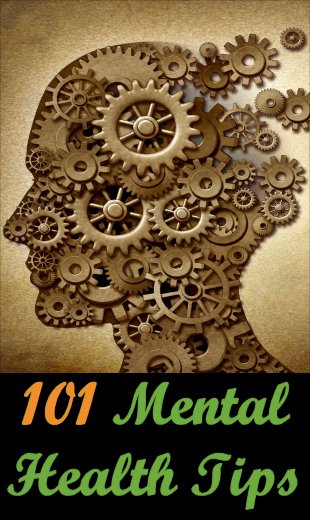8 Clues Your Baby Or Toddler May Have Autism
Although autism is diagnosed, on average, at the age of four, there are clues you might detect in even babies and toddlers.
This article lists a few of the more common signs that your child MAY be on the autism spectrum.
DISCLAIMER: As most parents will know, each child is different, so, for example, not all children start walking or talking at the same age (although there is an age range during which most children will start doing certain activities). So, what follows are things that MAY indicate your child is autistic, but since young children often display quirky and cute behaviours, these do NOT mean that this is definitely the case. Conversely, just because your child does not display any of these signs does not mean they don’t have autism either. Only a clinical diagnosis will give you an answer that has a reasonable degree of certainty, and that can not always be made for children this young.
Having said that, the more of these signs you detect in your child, the greater the possibility that there may be a problem, so at least you can seek medical advice at the earliest time possible.
With this disclaimer in mind, here we go.
Head Banging
This is a common symptom of autism, even in babies, and it’s different to the rocking motion that many children adopt, usually after they learn to sit up.
It’s also worth noting that about 20% of children (especially boys) do go through a phase of banging their heads, although with autistic children, it may be more frequent, more protracted, and more violent.
Some also theorize that it’s just a cry for attention or a sign of frustration.
Either way, head banging is certainly disturbing to watch, and it can go on for a long time.
There are likely several causes, but one hypothesis is that it’s because they are suffering from inflammation of the brain (aka encephalitis), which is a known side-effect of several vaccines (both the government and Merck, the pharmaceutical company, freely admit this), and they are simply trying to deal with the pain that the inflammation is causing.
It may take the form of a child banging their head repeatedly against a wall or door, or maybe their pillow if they’re in bed, for example, or they may pick up any item they can grab (e.g. a toy) and use that to hit themselves on the head.
Other forms of self-harm may also be evident, but in children this young, that would be relatively uncommon.
Some children grow out of this behaviour, either naturally or through a variety of methods that work with some children.
And, of course, some children never do, which is why you see teenagers and even young adults having to wear protective helmets.
Not Pointing Or Gesturing
Usually, young children will point at things that interest them, whereas those with autism do this less frequently.
Not Wanting To Interact
A lack of interest in wanting to interact with others (e.g. parents, siblings, other adults or children) can be a sign of autism, but again, it may just be they’re not in the mood for it.
Poor Eye Contact
This is one of the most common signs you’ll see – autistic children will rarely look you in the eye, or at you at all in some cases, even if you repeatedly call them by name.
They may also look like they’re not paying attention or “zoning out” – maybe because they spend a lot of time living inside their own head, or they are trying to focus on what’s being said.
Repetitive Behaviours
This can take many forms, including arm- or hand-flapping, finger-flicking, jumping, rocking, spinning / twirling, as well as head-banging (see above) and complex body movements.
However, it can also involve other objects, such as constantly flicking a rubber band, or twirling a piece of string, or being drawn to a particular texture and touching it again and again.
There is even a name for this behaviour – stimming, which is a short form of self-stimulating behaviour.
This too can be common in young children, but again, it’s less obsessive than it is with autistic children (although note that this repetitive behaviour is different to OCD, which is an anxiety disorder).
Sensory-Related Issues
This can take two different forms.
Firstly, many people with autism also suffer from Sensory Processing Disorder (SPD). This means that some of their senses can be overly developed.
For example, many autistic children do not like bright or flashing lights, or sounds, especially loud ones.
Another common problem is finding things that touch their skin “scratchy”, such as the tags on clothing.
Secondly, some autistic people crave touch, and, in particular, what are known as compression hugs. These are real, almost full-body hugs that last for a good few seconds – not the sort of quick hug you give an acquaintance on the street, for example.
If you have ever watched the wonderful movie “Temple Grandin”, you may remember that when she started college, she built herself a hug machine (which is also known as a hug box, squeeze box, or squeeze machine). This was a mechanical device she constructed that simulated a compression hug.
This is why using weighted blankets with people who are autistic (both children and adults) can be very comforting and therapeutic.
Finally, note that this is not an either-or situation – some children may only have one type of sensory issue, but others might have multiple ones.
Speech Problems
Of course, all babies remain largely non-verbal for most of their first year, but autistic children don’t start speaking until later – sometimes much later, sometimes never at all.
In addition, while children of about three can usually put together simple sentences, those on the autism spectrum may struggle with this, and what they do say may come out as incoherent babbling.
And there is one more trait that can indicate your child has ASD – making up their own words. (By itself, in the absence of all other signs, this is probably nothing to worry about, as lots of children do this, but combined with other signs, it may be worth monitoring.)
Starting To Walk Later Than Usual
Most children start to walk somewhere from 9 – 16 months, but children with autism may not start until 18 – 24 months.
Conclusion
Once again, please remember the Disclaimer at the beginning of this article! Showing these signs does not guarantee your child is autistic, while a child might still be autistic even if they don’t show any of these signs – because it can be difficult to diagnose accurately with children this young.
That is why the language is in this article is “soft” (e.g. words like usually, typically, relatively, might), because the above list is only meant to highlight a few clues that could be indicative of a problem.
As with most lists of this type, the more clues or symptoms you recognize, the more likely it is that an issue exists – but even if your child shows all of these symptoms, it is not a concrete diagnosis!
The only way to know with any degree of certainty is to see a trained medical professional, but if you do notice several of these signs at an early age, you may at least want to get help sooner rather than later.
Additional Resources
These are suggestions for those who wish to delve deeper into any of the above:







